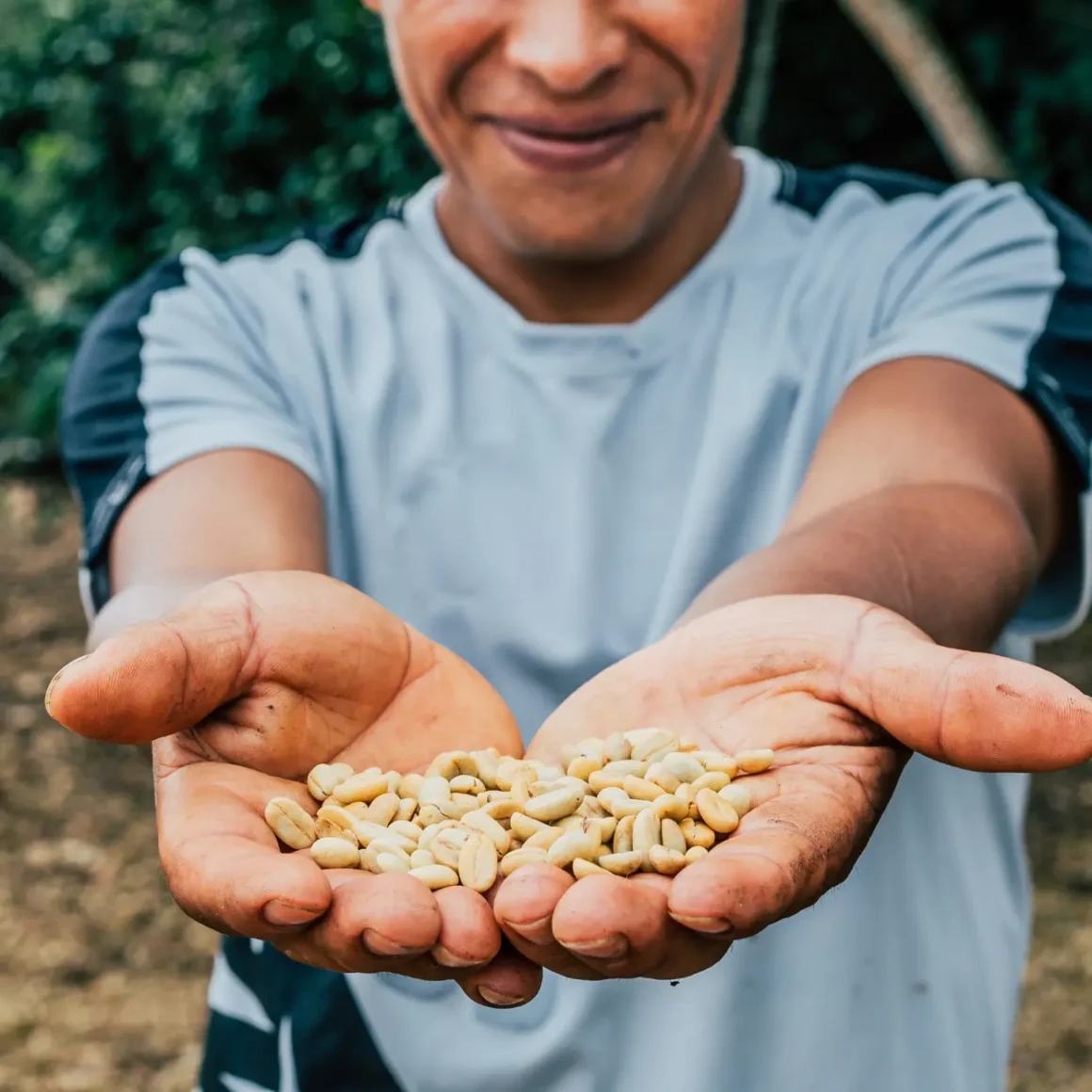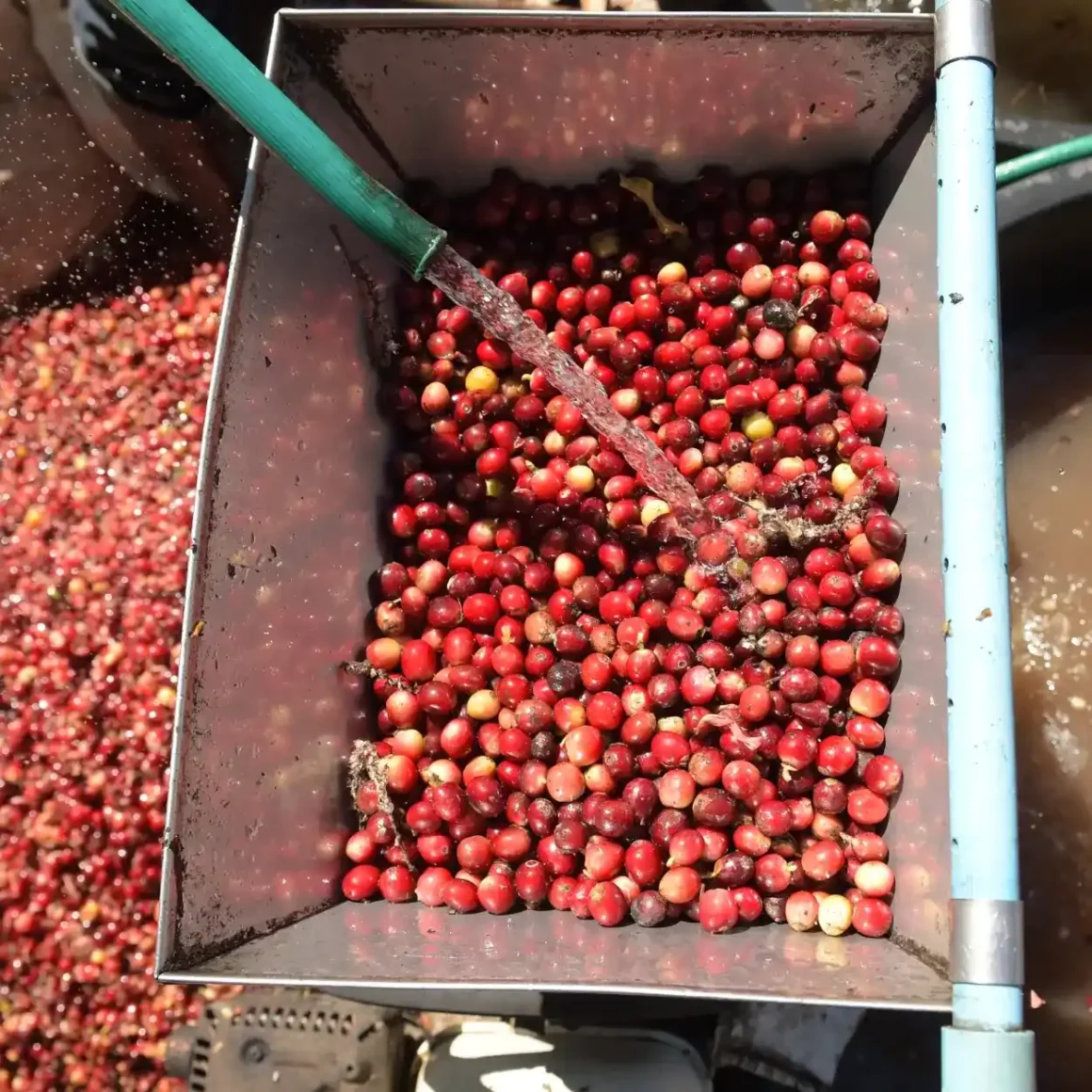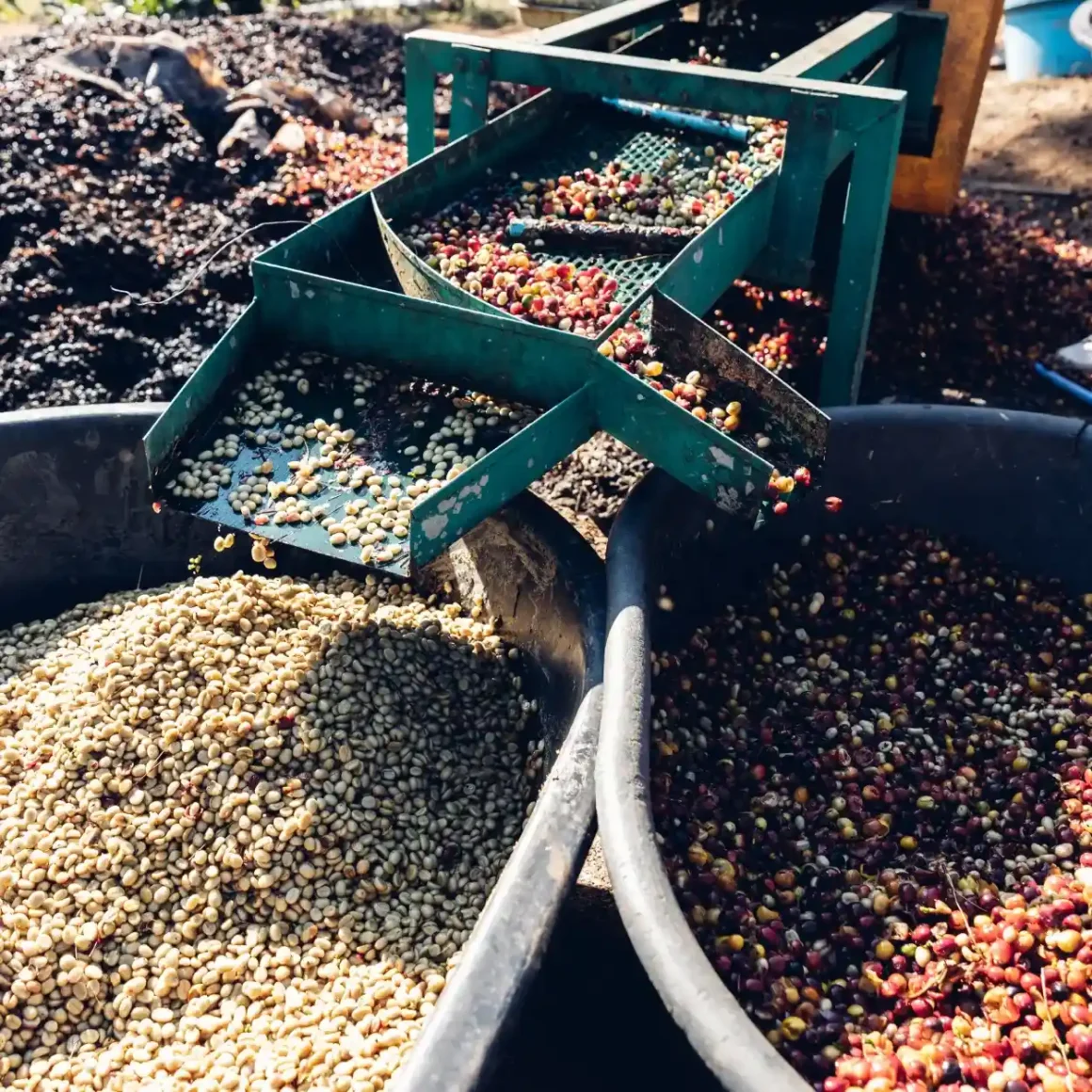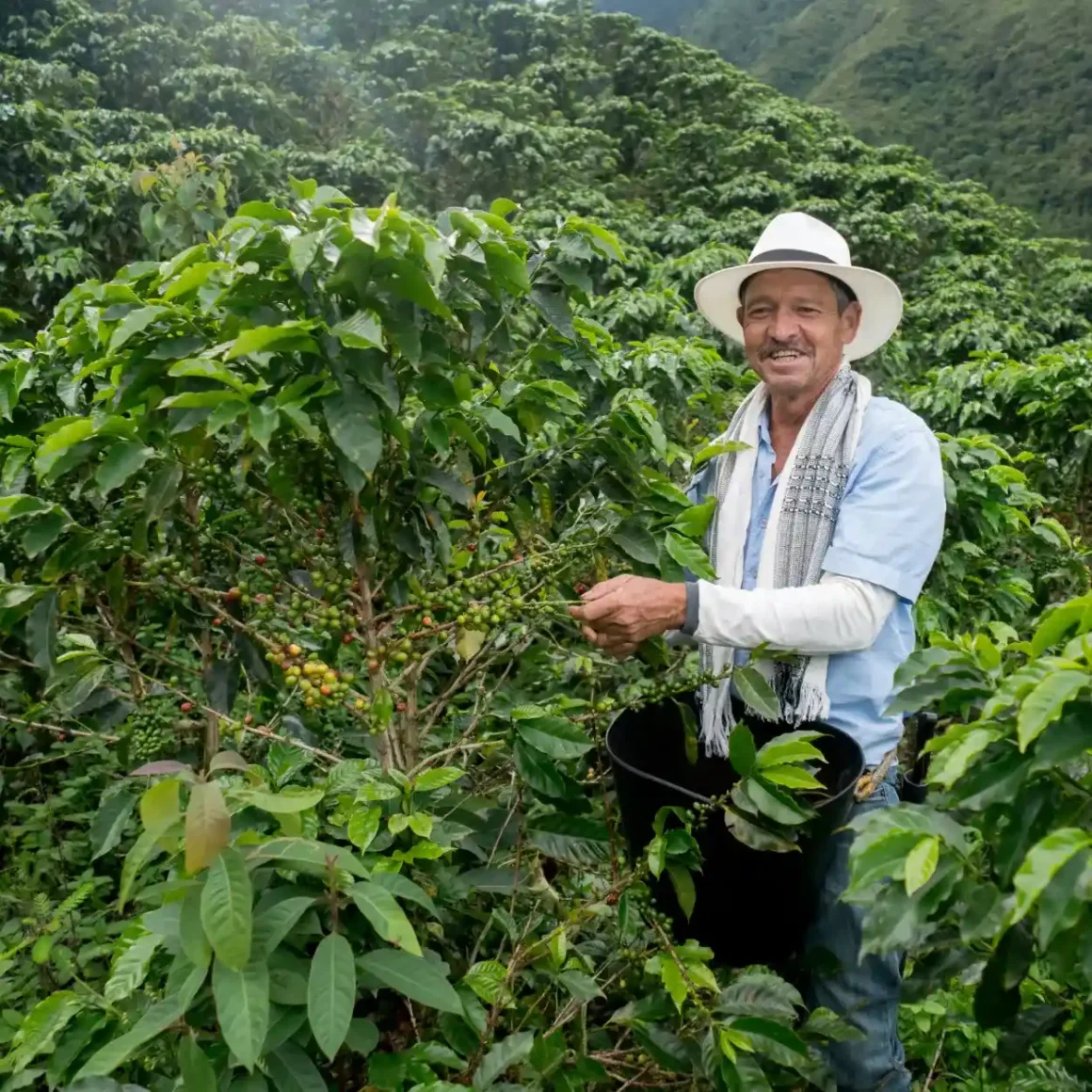Navigating the intricate world of coffee can be a fascinating journey, especially when delving into the details of how coffee beans are processed. In this comprehensive exploration, we dissect the two primary processing methods—washed and natural—each with its own unique impact on flavor, acidity, and sweetness. Whether you’re looking to understand the science behind your favorite cup or aiming to broaden your coffee horizons, this article serves as your guide.
We examine everything from the environmental implications and cost factors for both producers and consumers to the role these methods play in specialty coffee and coffee cupping. Additionally, we offer personalized advice on choosing the brew that best aligns with your palate, considering the influence of origin and terroir, as well as recommended brewing techniques. Dive in to discover the nuanced differences and similarities between washed vs natural coffee, and equip yourself with the knowledge to make a more informed coffee choice.
Washed vs. Natural Coffee: Key Takeaway
- Understanding the Difference: One of the most significant insights is recognizing the distinct processing methods of washed and natural coffee. While washed coffee focuses on consistency and allows the bean’s inherent flavors to shine, natural coffee offers a more unpredictable, often fruitier profile.
- Environmental Impact: The article sheds light on the sustainable aspects of each processing method. Natural coffee, generally produced in regions with water scarcity, has a lower environmental footprint, reducing water and energy usage.
- Cost Factors: The production costs differ between the two types, affecting both growers and consumers. Natural coffee is less resource-intensive, making it often more affordable, whereas washed coffee may require specialized machinery and additional water resources.
- Specialty Coffee and Cupping: Both washed and natural coffees have their own roles in specialty coffee circles and coffee cupping sessions. While washed coffees are often favored for their consistent acidity levels, natural coffees are valued for their complex, layered flavors.
- Personal Preferences Matter: Emphasis is placed on one’s individual taste and choice when deciding on washed versus natural coffee. Elements such as origin and terrain have an impact on flavor, with brewing advice offered to maximize enjoyment of each variety.
The Basic Principles of Coffee Processing

Coffee processing is a highly nuanced craft that greatly influences the taste, aroma, and quality of the final coffee cup. From the meticulous harvesting of coffee cherries to the specific methods employed in drying and milling, every step contributes to the overall coffee experience.
Introduction to Coffee Cherry Processing
Coffee cherries, the fruit that contains the coveted coffee bean, undergo various stages of processing post-harvest to prevent spoilage and optimize flavor. Two primary techniques are commonly used:
- The Dry (Natural) Method: In this approach, harvested cherries are spread over large drying beds or surfaces and left to sun-dry. Over a few weeks, the cherries are regularly stirred to ensure even drying until their moisture level drops to about 11%. (1)
- The Wet (Washed) Method: This involves mechanically removing the pulp of the cherry, leaving only the parchment skin on the bean. Following pulping, beans are sorted by weight and size and then fermented in water-filled tanks for 12 to 48 hours to remove the mucilage layer.
Understanding the particularities of each method allows you to appreciate the intricate science and art behind coffee processing, which often shapes the beverage’s final taste and quality.
Why Processing Methods Matter
The processing methods used not only impact the coffee’s flavor profile but also its sustainability and even the economic viability of coffee farming. Here’s why:
- Flavor Development: Different processing methods bring out various flavor notes in the coffee. For instance, the wet method typically results in a cleaner and brighter taste, while the dry method might produce a fruitier, more robust flavor.
- Environmental Impact: Methods like the wet processing technique use a considerable amount of water and may require waste treatment solutions.
- Economic Factors: Labor-intensive methods, like selective picking and hand sorting, can be cost-prohibitive but yield a higher quality product, which could command a premium price.
In essence, the choice of processing method can make or break the coffee, influencing everything from its market value to its ecological footprint.
The Journey from Cherry to Cup

The coffee bean’s journey is a rigorous one, involving numerous stages before it ends up as the beverage we all love. Key phases include:
- Harvesting: Ripe cherries are picked manually or mechanically, and the timing can vary depending on the coffee species and growing conditions.
- Milling and Sorting: After processing, beans go through hullers to remove the parchment layer and are then sorted by size, weight, and quality.
- Export and Quality Control: Known as green coffee at this stage, beans are exported in jute or sisal bags for further quality assessments like “cupping,” where their aroma and flavor are meticulously evaluated.
- Roasting and Grinding: Roasting transforms the green beans into what we commonly recognize as coffee, and grinding prepares it for the brewing process that extracts its flavors most effectively.
Understanding these stages enriches your coffee experience, offering insights into the complexities behind each cup. Whether you’re a casual drinker or a coffee aficionado, knowing the journey from cherry to cup adds another layer of appreciation for this beloved beverage.
Washed Coffee: An In-Depth Analysis
Washed coffee, also known as the “wet process,” is a method of preparing coffee beans that has gained significant traction in the coffee industry. From the intricate processes at the washing station to its unique flavor profiles, washed coffee has both its advocates and critics. This comprehensive analysis delves into the step-by-step washed coffee process, explores its flavor characteristics, and assesses its environmental and economic implications.
The Step-by-Step Washed Coffee Process

Before reaching your morning cup, coffee beans go through a meticulous washing procedure aimed at stripping away the fruit and mucilage to reveal the bean within. This process is variable, with numerous stages involved, often depending on the scale of the operation and the specific methodologies in use.
- Initial Sorting and Cleaning: The process commences with sorting the harvested coffee cherries, which can involve floating them in water. The denser, quality cherries sink, while the flawed or unripe ones float, making them easier to discard.
- Depulping and Demucilaging: Specialized machinery, either automated or manual, is then employed for depulping, which means removing the outer skin. Demucilaging involves stripping off the sticky fruit mucilage surrounding the bean. Some processes use both techniques. (2)
- Fermentation and Final Wash: If depulping is the only stage completed, the beans are then fermented. As previously discussed, they are kept in fermentation tanks for between 12 and 48 hours, depending on various factors like climate and the producer’s preferred methods. Finally, the beans are washed in clean water to remove the last layer of mucilage.
- Drying the Beans: Post-washing, the beans are dried using various methods, like machine drying or being laid out on raised beds or patios. The drying is carefully monitored until the desired moisture content is reached.
The washed coffee process may seem complex, but each step serves a crucial role in creating a consistent, high-quality bean suitable for roasting.
Flavor Profile & Characteristics
The flavor of washed coffee beans is distinct, shaped by the control producers have over each stage of the washing process. This often results in a cup that is celebrated for its clarity and complexity.
- Consistency in Flavor: One of the most notable characteristics of washed coffee is the uniformity in taste from bean to bean.
- Lighter Body: Typically, washed coffee beans possess a lighter body when compared to their naturally processed counterparts.
- Complex Notes: Washed coffee often showcases a range of complex flavors, along with brighter and more acidic undertones.
The careful and controlled washing process significantly contributes to the nuanced and consistent flavor profile that washed coffee is renowned for.
Environmental and Economic Impacts

While washed coffee offers a unique set of advantages, particularly in terms of flavor consistency, it also comes with its own set of challenges, primarily on the environmental and economic fronts.
- Water Usage: The washed process demands a significant amount of water, which can be a concern in regions where water scarcity is an issue. (3)
- Energy Consumption: The use of machinery for depulping, demucilaging, and sometimes drying means that the washed process typically consumes more power.
- Operational Costs: Specialized equipment and sometimes skilled labor is necessary for washing coffee, driving up the cost of production compared to the dry process.
Though washed coffee is lauded for its consistent flavor and quality, it’s essential to weigh these benefits against the environmental and economic resources required in its production.
Natural Coffee: A Closer Look
Natural coffee, often referred to as unwashed coffee, provides a unique journey from the coffee tree to your cup. Utilizing a dry process that has stood the test of time, this method of coffee preparation is particularly prevalent in water-scarce regions such as Ethiopia and Brazil. In this section, we’ll delve into the specifics of the natural coffee drying process, the distinct flavor profiles that result, and the method’s impact on coffee sustainability and production costs.
The Natural Coffee Drying Process
The drying process is the cornerstone of natural coffee production. Unlike washed coffee, where the beans are immediately separated from the cherries, natural coffee involves leaving the bean encased in the cherry during drying. This period of drying can last anywhere between two to six weeks, heavily influenced by local climate conditions.
- Sun Exposure: As soon as the cherries are harvested, they are spread out under the sun. This could be on a variety of surfaces such as bricks, concrete, or even raised beds, ensuring an even dry-out process.
- Frequent Turning: The cherries require regular raking and rotation to prevent unwanted natural fermentation and decay. While this step is labor-intensive, it’s essential for quality control.
- Final Milling: Once the cherries are thoroughly dried, they are subjected to milling to remove the external layers and reveal the raw coffee beans inside. This is an essential step as it ensures that the beans are free from all remnants of the fruit skin and husks.
Understanding the nuances of the drying process is crucial, especially since this is often the only feasible method in places where resources for wet processing are scarce.
Taste Differences and Nuances

Natural coffee offers a flavor experience quite distinct from its washed counterpart. Since the coffee beans remain in prolonged contact with the cherry, it results in a series of unique taste characteristics.
- Fruity Notes: As mentioned before, the beans often exude a fruity flavor profile, a direct result of the extended contact with the cherry’s flesh.
- Sugar Complexity: The process of sun-drying amplifies the sugary, fruity notes in the beans, adding complexity to the taste.
- Fermented Accent: Due to the lack of controlled fermentation as seen in washed coffee, natural coffee can sometimes present a slightly more fermented taste.
It’s the varying taste profile that makes natural coffee a subject of preference among coffee aficionados.
Sustainability and Production Costs
Natural coffee has both pros and cons when it comes to sustainable coffee production and the expenses associated with it.
- Water Conservation: The most notable advantage of natural coffee is its low water footprint. By eliminating the need for a wet washing process, natural coffee plays a role in water conservation.
- Energy Efficiency: Since there is no machinery needed to wash the coffee, this method also saves energy.
- Inconsistent Quality: One downside is the variability in flavor, which can sometimes impact the market value of the coffee.
- Labor Intensity: The manual labor required for the constant turning of cherries can also add to the production costs, albeit not significantly.
Despite some challenges, the low environmental impact and reduced utility costs make natural coffee a viable and often preferable option for producers and consumers alike.
Comparing Washed vs. Natural: Beyond the Flavor
When it comes to the coffee world, there’s more to consider than just your taste preferences. While the primary debate often centers around the flavor profiles of washed vs natural coffee, the impact of these processing methods extends further. In this section, we’ll delve into the environmental implications, and cost factors for both producers and consumers, as well as how these methods are viewed in the realm of specialty coffee and coffee cupping.
Effects on the Environment

When looking at coffee processing methods, it’s essential to consider the ecological footprint each leaves behind.
- Water Usage: As previously discussed, washed coffee processing typically requires a significant amount of water. This makes it less suitable for regions where water scarcity is an issue, raising concerns about its long-term sustainability.
- Energy Consumption: As mentioned above, Washed coffee also relies on machinery for the washing process, contributing to higher energy use. Conversely, natural coffee often depends on solar energy for drying, making it more energy-efficient.
- Waste Management: The waste produced in washed processing methods can be more easily managed and often repurposed as compost. In contrast, natural processing can sometimes result in unusable byproducts.
In sum, while washed coffee has its merits in waste management, the natural process generally wins in terms of water and energy conservation.
Cost Implications for Producers and Consumers
Both washed and natural coffee processing methods come with their own sets of financial challenges and advantages for producers, which can affect consumer pricing.
- Initial Investment: Washed coffee requires more sophisticated machinery, leading to higher initial costs for producers.
- Operational Costs: With the need for water and energy, washed coffee has higher ongoing operational costs. On the other hand, natural coffee generally incurs lower operational costs but may require more manual labor for tasks like stirring and turning the cherries.
- Price and Quality: Given the higher production costs, washed coffee is often more expensive for consumers. However, it’s also generally more consistent in flavor, which can justify the price for some.
In a nutshell, washed coffee tends to be pricier for both producers and consumers but offers a level of quality that many are willing to pay for.
The Role in Specialty Coffee and Coffee Cupping

The choice between washed and natural coffee is a significant factor in both specialty coffee and coffee cupping evaluations.
- Consistency in Flavor: Specialty coffee often leans towards washed coffees due to their consistent acidity and more “pure” bean flavors, making them a popular choice for coffee cupping sessions.
- Flavor Complexity: Natural coffees, with their unique and unpredictable flavor profiles, also have a place in specialty coffee. They offer complexities that are both celebrated and scrutinized in coffee cupping evaluations.
- Consumer Preferences: Some specialty coffee enthusiasts are drawn to the unfiltered, bold flavors of natural coffee, while others seek the cleanliness and predictability of washed beans.
Whether you prefer the robust flavors of natural coffee or the controlled, pure notes of washed coffee can heavily influence your experience in specialty coffee and coffee cupping.
By understanding these aspects, you can make a more informed decision that goes beyond just taste, extending to your ecological footprint and even your wallet.
Choosing the Right Brew for You

Finding the coffee that resonates with your taste buds is akin to a culinary journey—one that delves into a complex world of flavors, aromas, and brewing methods. This section aims to help you navigate this landscape by understanding your palate, recognizing the importance of origin and terroir, and offering tips on how to optimally brew both natural and washed coffees.
Understanding Your Palate: A Guide
When it comes to coffee, one of the first steps in choosing your ideal cup is to understand what your palate prefers.
- Acidity vs. Sweetness: If you find yourself drawn to more tart and crisp beverages, washed coffee, known for its bright acidity, might be your go-to choice. Conversely, if you prefer a sweeter, full-bodied flavor, natural coffee would be worth exploring.
- Flavor Complexity: Some coffee drinkers are intrigued by intricate flavors—floral notes, hints of fruit, or even chocolate undertones. Natural coffees usually offer such complexity.
- Taste Consistency: If you’re someone who likes to know exactly what to expect from your cup of coffee each morning, you may find comfort in the consistency of washed coffee.
By dissecting your flavor preferences, you’ll be better equipped to find the coffee that sings to your palate.
The Influence of Origin and Terroir

The region where coffee is grown—often referred to as its origin or terroir—plays an indispensable role in shaping its flavor profile.
- Geographical Factors: Altitude, soil quality, and climate can dramatically influence a coffee bean’s characteristics. For example, Ethiopian coffees, often naturally processed, tend to have fruity and floral notes, whereas Colombian coffees, usually washed, offer more nutty and chocolatey flavors.
- Cultural Techniques: Some countries have specific, traditional ways of processing coffee that contribute to its distinct flavor. Brazil often employs the natural method, whereas countries like Costa Rica prefer the washed technique.
- Availability: Keep in mind that not all regions will offer both natural and washed coffees, which will, in turn, affect your options.
Recognizing the impact of origin and terroir not only enriches your coffee experience but also broadens your understanding of the global coffee landscape.
How to Best Brew and Experience Each Method
After you’ve pinpointed your palate and origin preferences, it’s time to focus on the brewing methods that best bring out the inherent qualities of natural vs washed coffee.
- Natural Coffee: Given its complex flavors, a French press or cold brew can be ideal for natural coffee, allowing the coffee ample time to steep and release its full range of flavors.
- Washed Coffee: Methods like pour-over or AeroPress tend to highlight the clean, bright flavors of washed coffee. These techniques allow for better control over variables like water temperature and brew time, which can be crucial for washed beans.
- Fine-Tuning: Regardless of the method, feel free to tweak grind sizes, water temperature, and brew time to align the brew with your specific taste preferences.
By carefully selecting your brewing method, you can maximize the potential of your coffee, be it natural or washed, and elevate your daily coffee ritual to a gourmet experience.
Whether you’re a coffee novice or a seasoned aficionado, having a holistic understanding of your palate, the origin of your beans, and the appropriate brewing methods can profoundly enrich your coffee journey.
Conclusion
In conclusion, the distinction between Washed vs. Natural Coffee is pivotal to understanding the array of flavors and aromas in coffee. Washed coffee delivers a transparent and refined flavor, emphasizing the bean’s inherent taste and allowing a glimpse into its origin. Conversely, natural coffee, dried with the whole cherry, imparts bold, fruity notes, offering an exotic, rich spectrum of flavors but necessitates precision to avoid inconsistencies. This distinction isn’t solely about taste preferences; it’s a journey through the diverse cultures, climates, and traditions of the coffee-producing world, enriching our appreciation and knowledge of this universally cherished drink.
FAQ
Are there significant sustainability differences between washed and natural coffee processing?
Yes, natural coffee processing uses less water and energy, making it more environmentally sustainable, especially in regions with water scarcity.
How do coffee connoisseurs typically rate natural coffee in terms of flavor complexity?
Coffee experts often find natural coffee to have complex, layered flavors due to the prolonged contact with the cherry flesh, although the experience can be less consistent.
What other coffee processing methods exist apart from washed and natural?
While the article focuses on washed and natural methods, other techniques like honey processing and pulped natural processing also exist, each with its own impact on flavor and sustainability.
Can the average coffee drinker distinguish between washed and natural coffee?
It depends on the individual's palate, but the differences in acidity and fruity notes between washed and natural coffee can be noticeable even to casual coffee drinkers.















